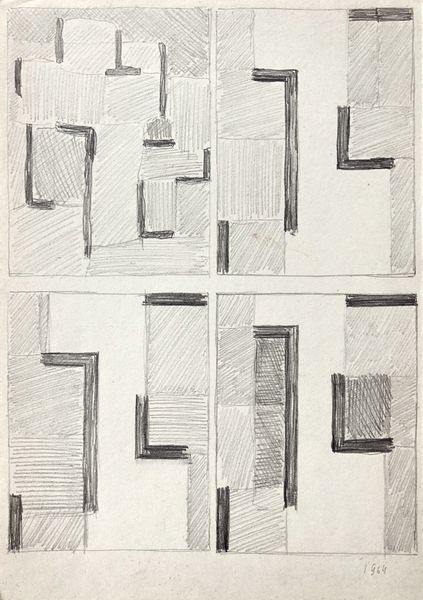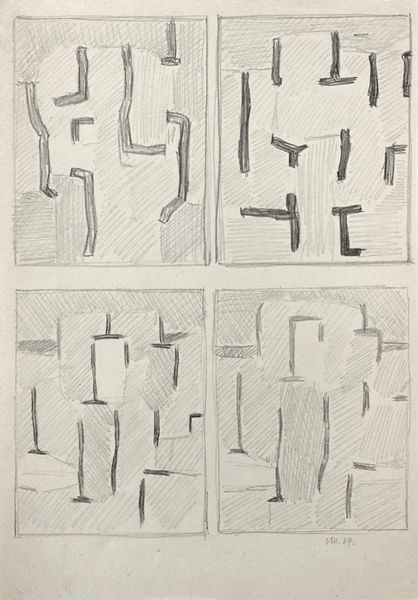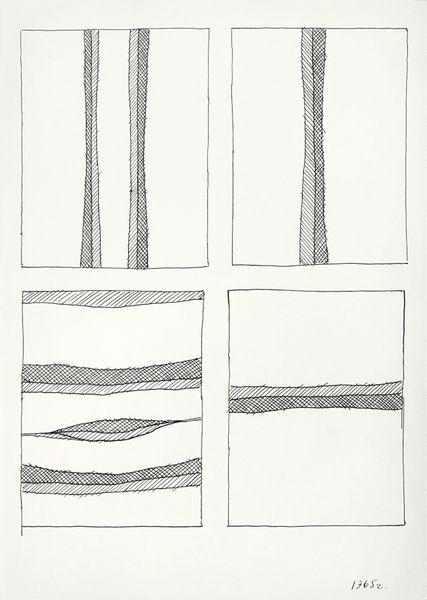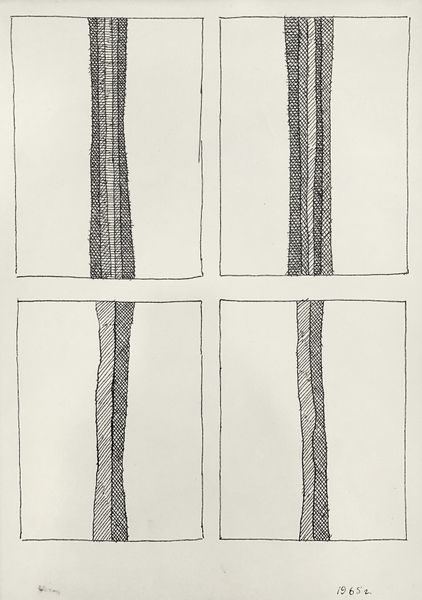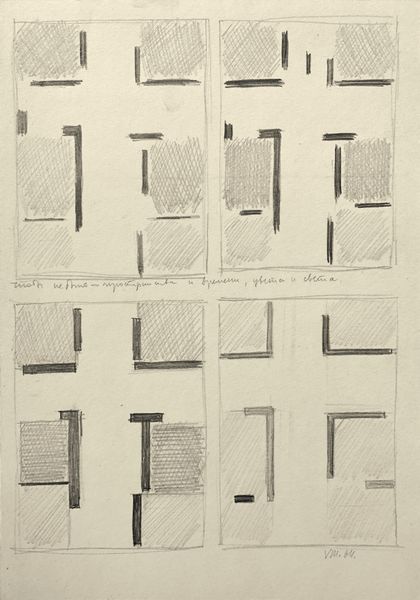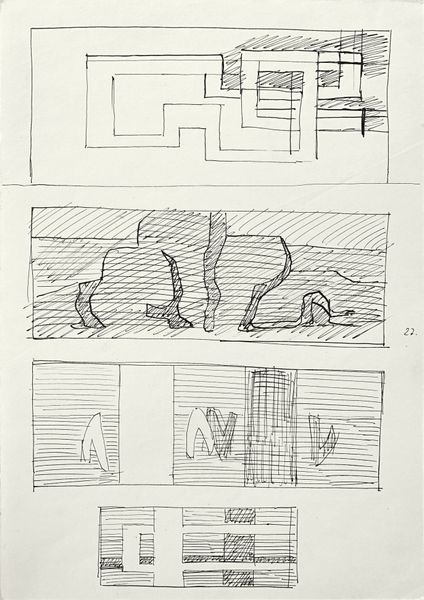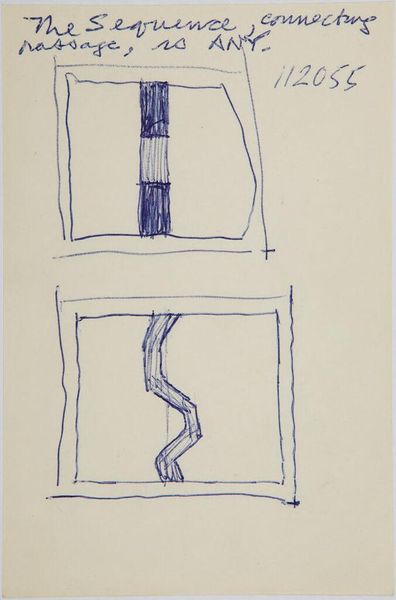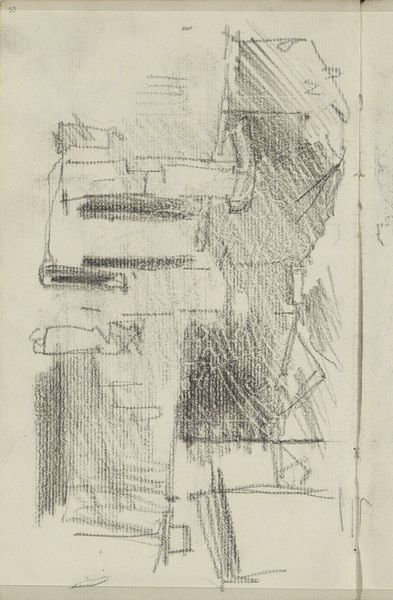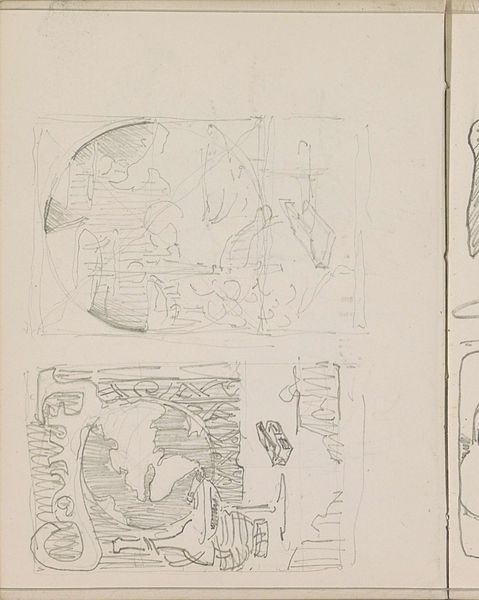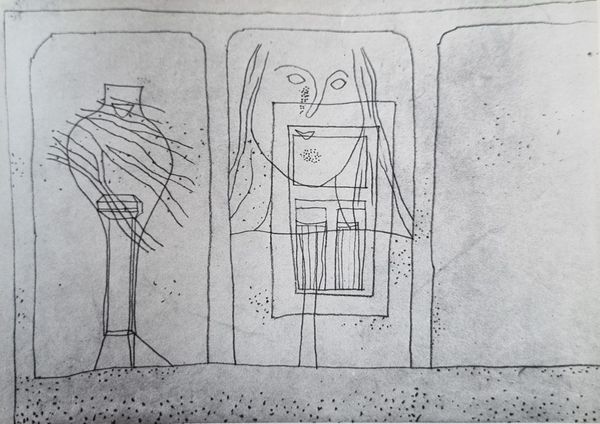
drawing, graphite
#
drawing
#
geometric
#
sketch
#
abstraction
#
line
#
graphite
#
modernism
Copyright: Hryhorii Havrylenko,Fair Use
Curator: The somberness is almost palpable, isn't it? A kind of contained anxiety expressed through the artist’s hand. Editor: Well, this graphite drawing by Hryhorii Havrylenko, titled "Four Compositions (sketches)" and created in 1964, presents a fascinating set of contrasts that may lend itself to different interpretations of emotional responses, in the style of modernism. Curator: The upper two quadrants do, indeed, contrast quite strikingly with the lower register—the stark geometry versus what appears to be abstracted portraiture. Do you find that distinction holds up? Editor: The repetition of form certainly binds the piece together, although the images do seem like two experiments happening at once. What do you make of that division, culturally and artistically? Curator: It is compelling. Perhaps Havrylenko explores contrasting concepts of architectural form versus human, while using symbolic building blocks like squares, rectangles and lines? This piece feels almost like a coded language, where forms have replaced specific words and emotional connections. Editor: Considering that Havrylenko was working during the Soviet era, there is plenty of social context to be found. Geometric abstraction offered a certain degree of deniability when making coded and veiled statements. Curator: Absolutely. By translating those messages and abstracting emotional weight and lived realities through those geometric forms, it almost ensures the image holds the social tension embedded in Ukrainian modernism during the 1960s. The symbol itself becomes a cultural refuge. Editor: A clever move, making symbolism a safe space amid a landscape where artistic expression could be monitored or even prohibited. The materiality, a humble graphite on paper, also contributes to this piece’s historical message; it isn't pretentious or overtly political, which allowed for private expressions during a repressive time. Curator: In this case, the choice of materials contributes to how memory and identity are preserved. This isn't just lines on paper; it is cultural continuity in a place, space, and time of constant struggle. Editor: Agreed. Ultimately, this series of sketches on paper embodies resilience in form. Curator: Indeed—and stands as a monument to Havrylenko's capacity to carry cultural weight through visual language.
Comments
No comments
Be the first to comment and join the conversation on the ultimate creative platform.
